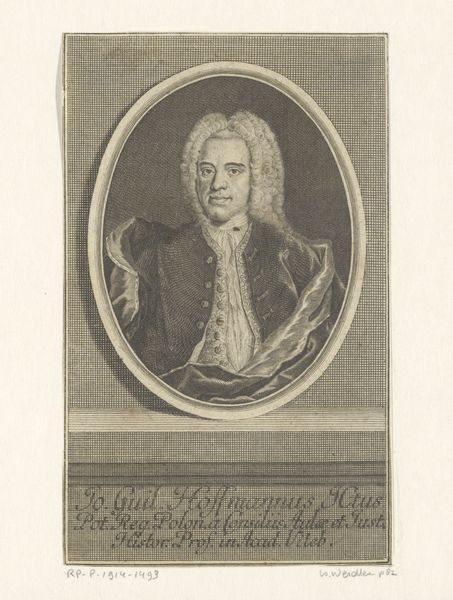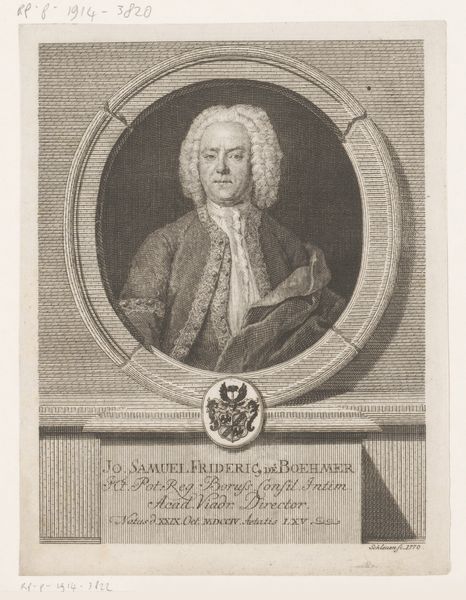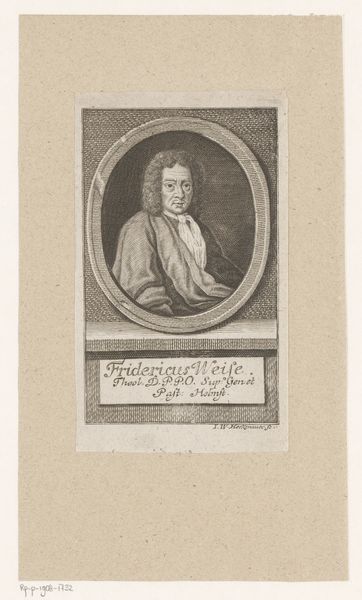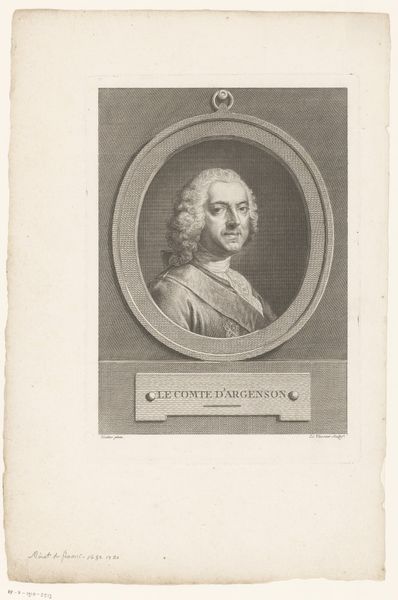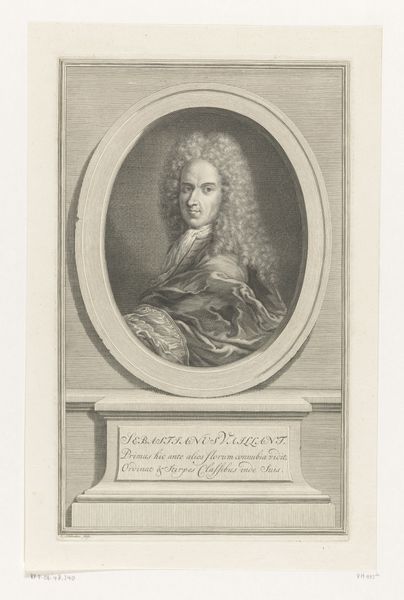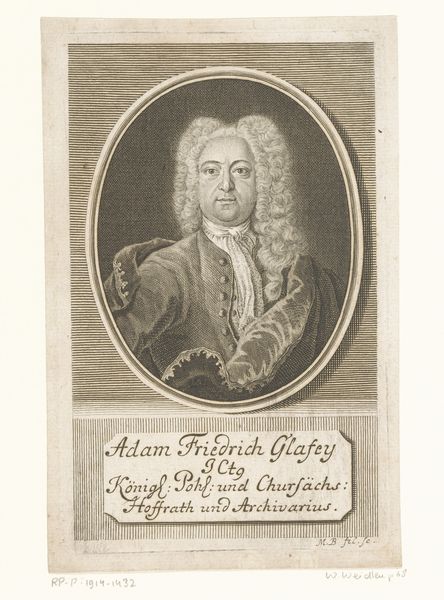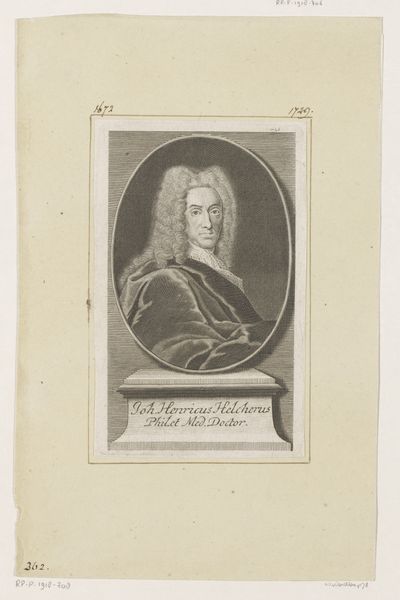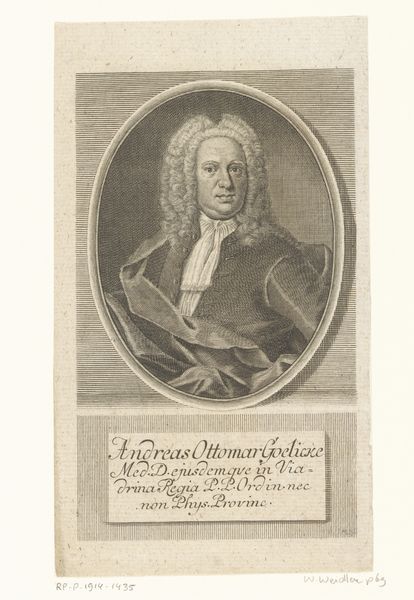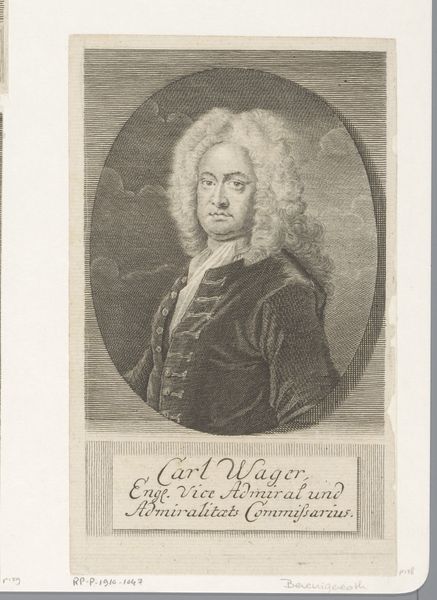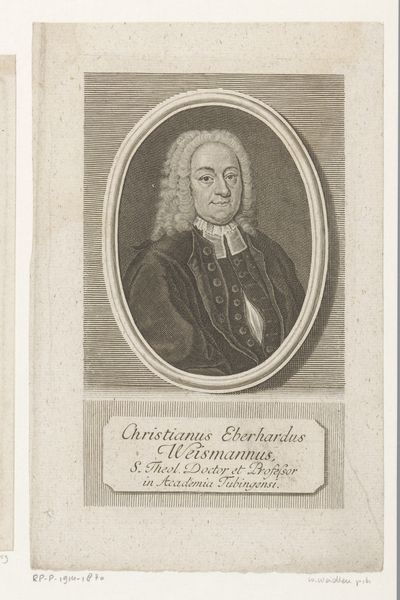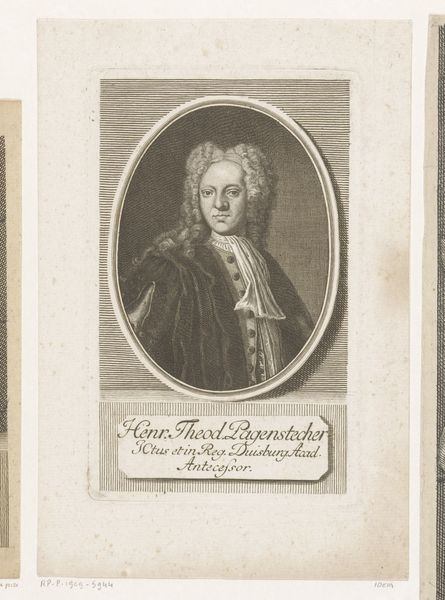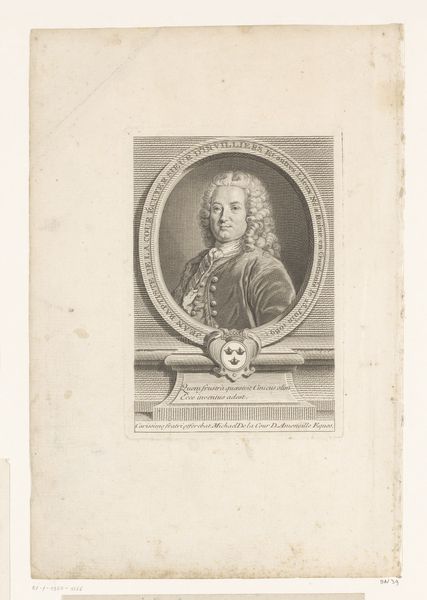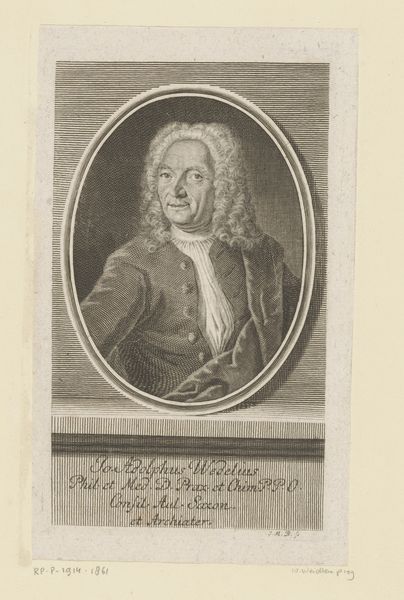
Dimensions: height 141 mm, width 90 mm
Copyright: Rijks Museum: Open Domain
Curator: Here we have a work identified as "Portret van Nicolaus Christoph Lunker," created by Johann Christian Ernst Müller, likely sometime between 1776 and 1824. It is an engraving. What's your initial read? Editor: Stark! The sitter’s wig is extravagant, practically eclipsing him. There is something quite unforgiving about the gaze. It definitely speaks of wealth and power but with a distinct chill. Curator: Absolutely. Consider the socio-political context. This portrait, intended as a print, was a means to disseminate the image of Lunker, reinforcing his status. Engravings like this one functioned as political tools. How do we understand his status today? Editor: I’m immediately drawn to the performative aspects of identity here. The wig, the embroidered coat—it all seems deliberately constructed. Given his elevated societal position, it's intriguing to consider the pressure he might have faced to maintain a certain image. Whose gaze was he playing to, and what anxieties might lie beneath this exterior? Curator: It’s fascinating to consider that, despite its relatively small scale, the artwork also adheres to historical painting conventions in its dedication to realism and capturing likeness, while being distributed like propaganda through printmaking techniques. This portrait aimed to project an image of unassailable authority. Editor: Authority, definitely. I think the framing reinforces this sense of detachment and, perhaps, even fear. But portraits, I believe, often reflect both the subject and the society’s desires and expectations—a negotiation that occurred between artist, sitter, and projected audience. Curator: A very pertinent point. The work encourages us to unpack the public image of Lunker and question the motivations behind its dissemination, understanding that the political undertones influenced what was presented in these artistic depictions. Editor: Reflecting on our dialogue, this engraving reminds us that portraits were seldom neutral. They were instruments, subtly yet powerfully shaping perceptions and solidifying hierarchies within society. The politics of display is very powerful here!
Comments
No comments
Be the first to comment and join the conversation on the ultimate creative platform.
